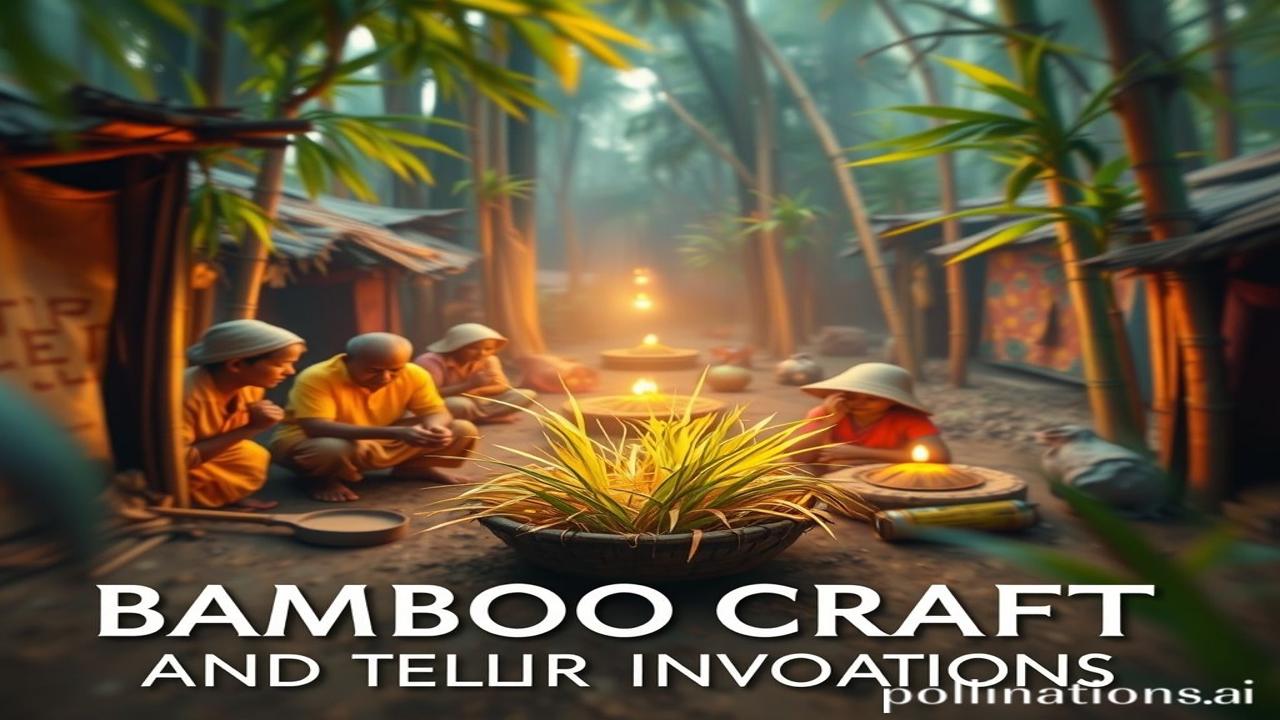Baans Ki Kahani: Where the Whispers of Ancient Crafts Resonate Today
Kabhi suna hai baans (bamboo) ke baje hue geeton ko? No, I don’t mean the flute, but the silent songs etched into every woven basket, every sturdy scaffolding, every delicate fan. These aren’t just objects; they’re echoes of generations, whispers of skill passed down through centuries, a living testament to India’s incredible heritage. Waqt ki dhool mein, these stories often get buried, but today, let’s unearth them and celebrate the ingenuity of India’s bamboo craft communities.
Baans: A Timeless Tradition – Itihasic Prishthbhumi
What exactly is baans craft? It’s more than just making pretty things out of bamboo. It’s a deeply ingrained tradition, a way of life for many communities across India. From Assam to Kerala, Maharashtra to Bengal, bamboo has been intertwined with daily existence for thousands of years. Evidence suggests its use dates back to the Indus Valley Civilization – imagine!
When and where did this all start? It’s difficult to pinpoint an exact date, but archaeological evidence and ancient texts suggest bamboo’s use in India goes back over 5000 years. Different regions developed their unique styles and techniques, influenced by local materials, climate, and cultural needs. Think of it as a living, breathing art form, constantly evolving.
Why is it so important? Well, baans isn’t just beautiful; it’s incredibly versatile and sustainable. In a world grappling with environmental concerns, bamboo offers a renewable resource that can be used for everything from housing and furniture to food and medicine. Moreover, the craft provides livelihood for millions of artisans, preserving traditional knowledge and empowering rural communities. It is a story of कला, शक्ति, and resilience.
Zameeni Sach: Log aur Jeevan – Deep Dive with Human Element
Imagine a village nestled in the hills of Assam. Early morning, the air is thick with mist and the scent of damp earth. Kamala Tai, her hands weathered with age, sits outside her hut, deftly weaving bamboo strips into a beautiful basket. This isn’t just a job; it’s a ritual. Her grandmother taught her, and she will teach her granddaughter. Each knot, each weave tells a story – a story of her family, her community, and her connection to the land.
“Yeh humari parampara hai,” she might say, her eyes twinkling. “Baans humare liye sab kuch hai – ghar banane se lekar, khana rakhne tak, aur bhagwaan ko prarthna karne tak.” (This is our tradition. Bamboo is everything to us – from building houses to storing food, and even praying to God.)
Her son, Rohan, is learning to build scaffolding from bamboo. He worries about the future, about whether younger generations will continue this ancient craft. But he also sees the potential, the growing demand for eco-friendly products. He dreams of starting his own small business, bringing the beauty of bamboo craft to the world. He feels the weight of his धरोहर but also the spark of innovation.
Dharohar aur Pehchan: Cultural Significance Today
Today, baans craft is experiencing a resurgence. People are recognizing the value of handcrafted, sustainable products. We see it in the increasing demand for bamboo furniture, décor, and even clothing. Designers are experimenting with new techniques, blending traditional skills with modern aesthetics.
But its significance goes beyond just aesthetics. Bamboo craft is a powerful symbol of Bharatiyata – it represents our connection to nature, our respect for tradition, and our ingenuity in utilizing local resources. It is a reminder that true beauty lies not in mass-produced items but in the unique stories and skills embedded in handcrafted objects. We see echoes of its past in the elaborate bamboo arches erected during Durga Puja, the meticulously woven mats used during weddings, and the simple, yet elegant bamboo utensils still used in many homes.
Mazedar Tathya ya Bhram-Bhanjak: Fun Fact or Myth-Buster
Log samajhte hain ki bamboo sirf gareeb logon ka material hai… lekin asli sach yeh hai ki bamboo duniya ka sabse majboot aur versatile natural material mein se ek hai! (People think that bamboo is only for poor people… but the truth is that bamboo is one of the strongest and most versatile natural materials in the world!) Its tensile strength is comparable to steel! It’s also one of the fastest-growing plants on earth, making it a truly sustainable choice.
Another misconception? That all bamboo craft looks the same. Actually, each region boasts its own unique style and techniques. For instance, the intricate cane work of Assam is vastly different from the rustic bamboo furniture of Kerala.
Drishya aur Bhavnayein: Visual & Sensory Layer
Imagine stepping into a bamboo workshop. The air is filled with the earthy scent of fresh bamboo and the rhythmic tapping of tools. Sunlight streams through the bamboo walls, casting intricate shadows. You feel the smooth, cool texture of the bamboo in your hands. The sounds of laughter and chatter mingle with the rhythmic creaks of the bamboo. It’s a symphony of senses, a glimpse into a world where nature and human ingenuity intertwine.
Antim Vichar ya Uddharan: Closing Insight or Quote
As we celebrate the ingenuity of bamboo craft communities, let us remember that these crafts are not just about making beautiful objects. They are about preserving a way of life, empowering communities, and fostering a deep connection with nature. As the famous saying goes: “Vasudhaiva Kutumbakam” – The world is one family. Let us honor the traditions and skills that bind us together and create a more sustainable future for all. Just as a single bamboo shoot can grow into a towering grove, may the spirit of innovation and resilience continue to flourish within these communities.
